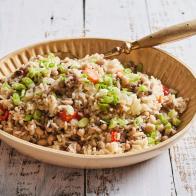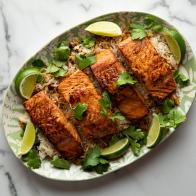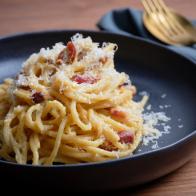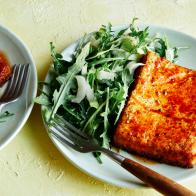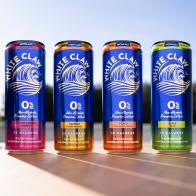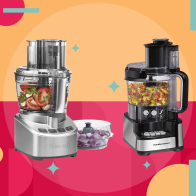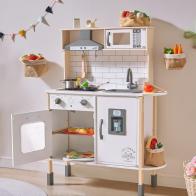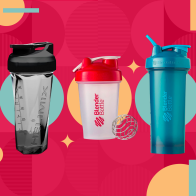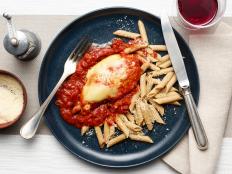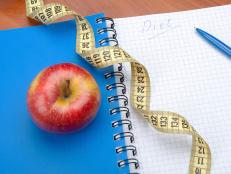Which Foods Should You Keep or Toss Out After a Cookout?
After a gathering outside, consider time and temperature when figuring out what’s safe to have as leftovers.

Granger Wootz/Getty Images
What’s better than a cookout during the steamy days of summer? Hot dogs, burgers, potato salad, sliced watermelon and beer always make for a good time, especially outside. But how do you know what foods you can keep and which you should toss out when the cookout is over? In a recent USDA consumer behavior study, reports show that folks don’t always wash their hands properly or use a food thermometer. Below you’ll find the top conditions where bacteria thrive — and what you can do to minimize their growth. You’ll also find which foods you can keep or toss, especially if they exceed a specific time and temperature limit outside.
What Leads to Bacteria Growth in Food?
The main food safety concern at a cookout is bacteria growth. Bacteria like to grow on foods that are high in protein and carbohydrates – things like chicken, beef, hot dogs, pasta, milk, dairy and any cooked vegetable. Bacteria thrive at a temperature of 40 to 140 degrees Fahrenheit. According to the USDA, this means using a thermometer to ensure that your food (especially meat) has reached the proper minimal internal temperature when grilling is key.
A thermometer should be inserted in the thickest part of the food to determine doneness. For example, through the side of a beef patty until the probe reaches the center. Color is never a reliable indicator of doneness. The following are the safe minimum internal temperatures to cook typical cookout food.
- Whole Cuts of Meat: 145 degrees Fahrenheit with a three-minute rest time
- Fish: 145 degrees Fahrenheit
- Ground Meats: 160 degrees Fahrenheit
- Poultry (Ground or Whole): 165 degrees Fahrenheit
In addition, although frozen products like packaged frozen French fries or packaged frozen mini hot dogs may appear to be pre-cooked or browned, they should be treated as raw food and cooked thoroughly. Products labeled as “Cook and Serve,” “Ready to Cook” and “Oven Ready” must be cooked as well.
Keeping cooked and raw food outside can also lead to bacteria growing in amounts that can potentially make someone sick. The USDA recommends that food should not sit out for more than two hours outdoors, or if the temperature is 90-degree Fahrenheit or above, food should not sit out for over an hour. If the food sits out longer than recommended, it should be tossed.

GMVozd/Getty Images
To Keep or To Toss?
So which foods should you keep after a cookout, and which should be tossed out?
Keep:
- Canned or bottled beverages
- Bread and crackers
- Condiments that don’t need refrigeration after opening, like mustard
- Whole fruit, like apples and oranges
- Cookies and desserts that do not need to be refrigerated
These foods can still be placed in a cooler to keep them cool as high heat can decrease the quality and shelf-life of the food.
Perishable foods like cooked meats, mayonnaise-based salads and sliced fruit can be kept if they were kept cold at 40 degrees Fahrenheit or below, or at 140-degrees Fahrenheit or above, and left out for no more than two hours. If the temperature outside was 90 degrees Fahrenheit or above, then the food should be tossed if it was left out for more than an hour.
Toss:
If any of the following perishable foods are kept outside (not in the cooler or warm at 140 degrees Fahrenheit or above) for more than two hours (one hour if the temperature is at or above 90-degrees Fahrenheit), then they should be discarded.
- Cooked or raw chicken, beef, fish, lamb, veal, venison and processed meats, like hot dogs
- Cooked or raw eggs
- Tofu, tempeh, texturized vegetable protein (TVP)
- Cooked vegetables
- Any cooked pasta or grain dish, like pasta salad
- Any salad made with mayonnaise
- Desserts that need to be refrigerated like rice pudding and custard-based desserts
- Sliced melon or cut fruit, like a fruit salad
- Salad with sliced vegetables
- Cooked beans, peas and lentils
Bottom Line: Time and temperature are two important factors to determine whether a food should be kept or tossed out. Make sure to have a timer and thermometer in hand when heading to your next cookout.
Related Content:
